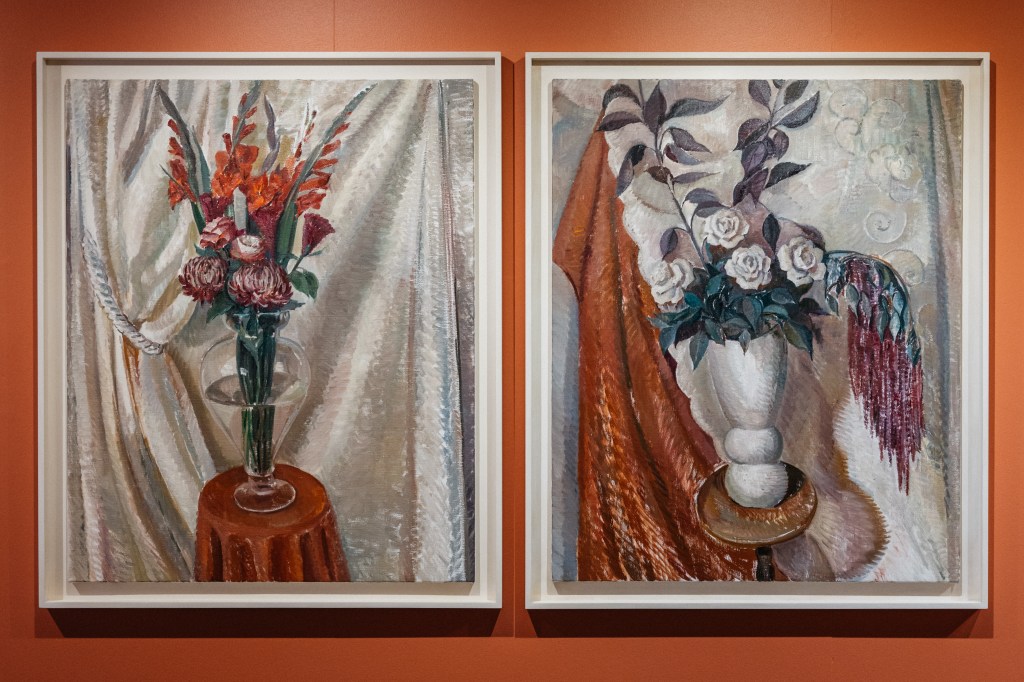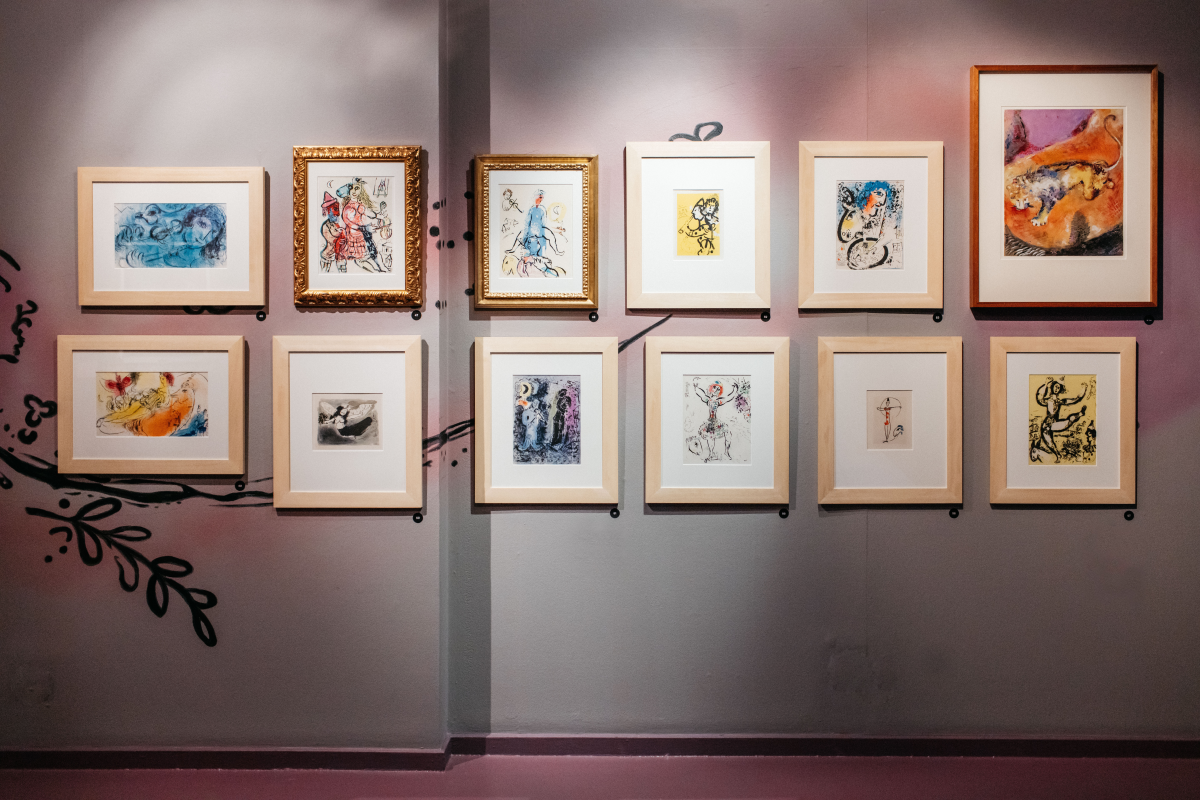Let the show begin! Make your way up a flight of stairs to the first floor and join in the wonder of flying horses and embracing couples while a weightless Eiffel Tower floats happily by. And, like magic, as you move from intimate space to intimate space, flowers will bloom on the walls around you. Delineated by variously coloured stage-like curtains, each room takes on its own fantasy-like performance. Presently showing at the Jewish Museum of Australia in Melbourne, the exhibition CHAGALL tells the story of the artist’s creative journey through text, printmaking and his larger-scale operatic works and stained-glass window installations.
Celebrating the artist’s distinctive visual language, Curator Jade Niklai draws from his folkloric Russian roots to his Parisian influences spanning fauvism, cubism and expressionism to explore themes around language, literature and the Bible, as well as the theatre and the natural world.
Born in 1887 in Vitebsk, Belarus, then part of the Russian Empire, Marc Chagall grew up in a Hassidic Jewish family – later relocating to Paris, which became his second home.
Chagall’s imagery not only reveals the joy, love and wonder he saw in the world around him, through his use of flowing lines and bright colours, but also at times hints of a melancholy – an inner world coming to terms perhaps with the turmoil of the times in which he lived.
Gallery design by Anna Tregloan draws on the artist’s love of the theatre – curtained entrances creating a stage effect between each room, while the splashes of line and colour on the walls behind the artwork acts as a prop to enhance and connect the visual performance.
Chagall’s mastery of the print medium can be seen in such dream-like works as Paysage bleu (Blue landscape),1958, which draws from elements of the artist’s personal and family history. The lithograph depicts a woman with a child sitting in a crescent-like form accompanied by symbols of the bird and clock. Splashes of colour accent the forms, while the background melts into a watery blue. Loose flowing line work and a flattened picture plain reflect a combination of modernist and folkloric influences.
Read: Chagall’s Jewish heritage spotlighted in new exhibition
In another space, pages from illustrated poetry line the walls while glass cabinets house artist books. Collaborations with Paul Cassirer, a Jewish publisher from Berlin, and later with Ambroise Vollard, a publisher in Paris, allowed Chagall to combine his love of literature and the visual medium.
Illustrated poems by Paul Éluard, translated by Anna Pitt in cooperation with Alliance Française de Melbourne – Même quand nous dormons (Even when we sleep) and Le dur désir de durer (The dour desire to endure), 1946 – are supported by offset prints of the sleeping lovers captured through simple expressive line work.
Although Chagall’s imagery became more secular over time, as reflected in his celebratory nature and flower works, his religious roots continued to be a significant influence, as seen in his print series of stories from the Old Testament. Part of this Bible Series (1952-1956) is held in the museum’s permanent collection; however, an original copy of the Bible publication can be seen in the current exhibition.
It was Chagall’s larger-scale public works, however, which reflect the mature artist in his use of form, line and colour. Reproductions of a number of his stained-glass pieces, such as Chapel window (east wing), 1967 in the Capel United Church and All Saints Church, Tudeley, Kent in the UK, depict Christ on the cross surrounded by images from biblical narratives. The piece, composed of wonderful painterly forms and explosions of colour, is dissected by flowing lines of lead, creating a movement and energy not often seen in the leadlight medium.

A reproduction of the artist’s ceiling design for the Paris Opera House – Palais Garnier ceiling design, 1964, projected on one of the gallery walls, is another of Chagall’s important public works, giving the viewer an idea of the immensity of this commission. Completed on 250 square metre canvases, it represents 12 scenes from Chagall’s favourite operas and landmarks in Paris and Russia.
Although text labels throughout the exhibition are often placed in positions too low for comfortable reference, further supporting material such as didactic panels and video screens provide the visitor with a good sense of the artist, the times and his working environment.
Dedicated to the Jewish Museum’s inaugural director, the late Dr Helen Light AM, CHAGALL pays homage to the Museum’s first large-scale exhibition, Chagall and the Bible, 1995, and is a joyous celebration of a great artist.
CHAGALL
Jewish Museum, Melbourne
Chagall will be exhibited until 10 December 2023 with a number of late-night openings.





